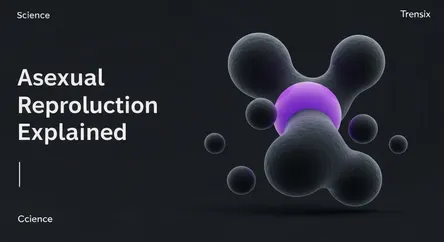Science
Asexual Reproduction Explained

Explore how organisms reproduce without a partner. This guide explains the methods and importance of asexual reproduction in the natural world.
What is it?
Asexual reproduction is a mode of reproduction where a single parent produces offspring that are genetically identical to itself, essentially creating a clone. Unlike sexual reproduction, it doesn't involve the fusion of gametes from two parents. This process is common across many forms of life. Simpler organisms like bacteria use binary fission, splitting into two identical cells. Yeast can reproduce by budding, where a new individual grows out from the parent's body. Even some complex plants and animals use methods like fragmentation or parthenogenesis, where an embryo develops from an unfertilized egg.
Why is it trending?
This topic is trending due to its relevance in biotechnology, agriculture, and ecology. It's the natural basis for cloning, a field with significant medical and ethical discussions. Scientists study asexual reproduction to understand how certain species, including invasive ones, can rapidly colonize new environments. Its primary advantage is speed and efficiency—an organism doesn't need to find a mate, allowing for rapid population growth when conditions are favorable. This makes it a powerful survival strategy and a key area of research for understanding population dynamics.
How does it affect people?
Asexual reproduction has a direct impact on human life, especially in food production. Techniques like grafting plants or taking cuttings are forms of artificial asexual reproduction used to propagate crops with desirable traits, ensuring consistency in our food supply. In medicine, understanding rapid, asexual cell division is fundamental to cancer research. The main drawback is the lack of genetic diversity, which makes these populations highly vulnerable to diseases or environmental shifts. This has implications for managing ecosystems, controlling pests, and understanding the spread of pathogens that reproduce asexually.